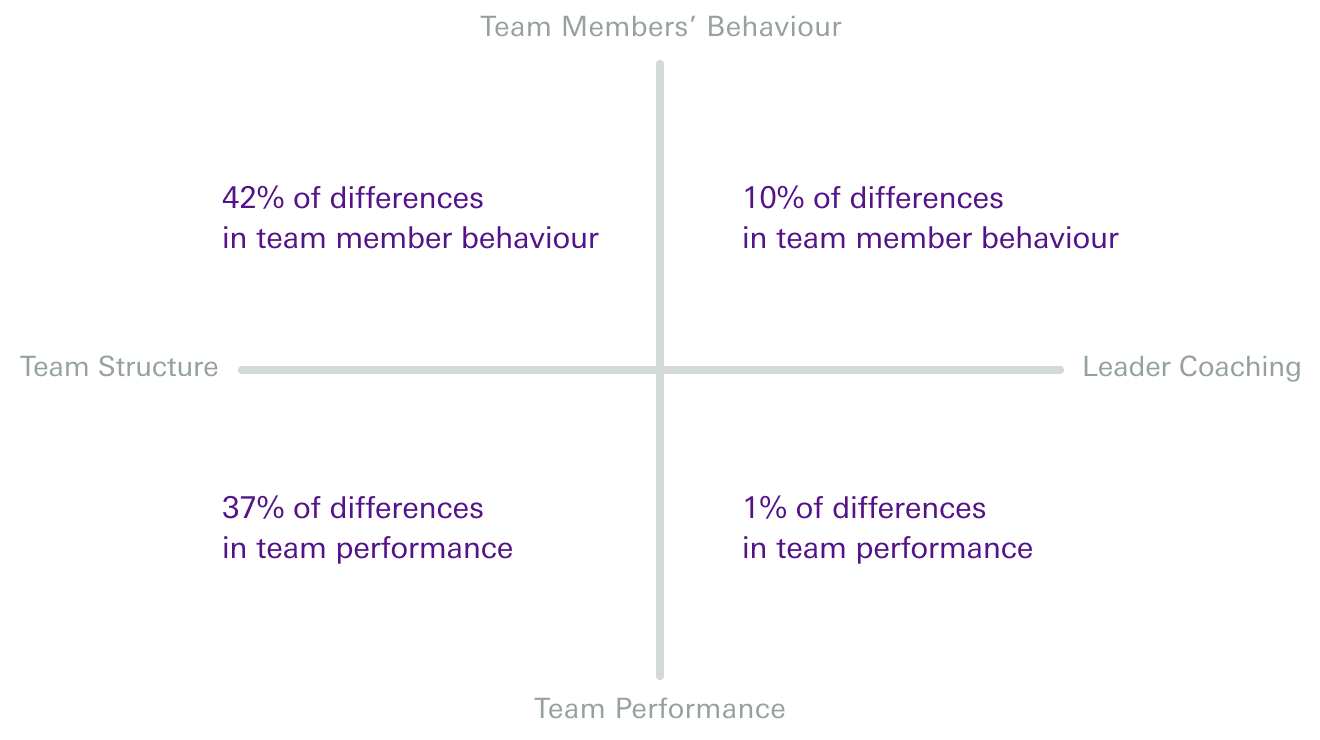Teamwork makes the dream work.
Two heads are better than one.
Together Everyone Achieves More.
We’ve all heard about these benefits of teamwork. But most of us carry bad experiences on teams with us, fearful of members butting heads or getting cut out of the group. How can we build the conditions for team success, right from the start?
Let’s start with the most foundational question: What even is a team? It seems obvious, but most team meetings are not just with your team. Some team leaders don’t really have a team to lead; they only manage people that work independently.
A team has three critical elements:
- A set of people with clear membership,
- Working together towards a common goal,
- With unique roles for each person.
Now we can move on to the good stuff: What does a team need to succeed?
The six conditions for team success are below, from the most important to the least. If you follow these steps, in order, when building a team, you’ll avoid problems later on.
The Success Factors
| Six Conditions for Team Success | Explanations |
|---|---|
| Make sure it’s a “real team” | A real team depends on each other to reach a shared goal. |
| Set a compelling purpose | A compelling purpose energizes members towards their goal: all future decisions depend on this. |
| Choose the right people | Build as small and diverse a team as possible, with the right expertise for the task and the skills to collaborate. |
| Agree on clear norms of action | Choose which behaviours are acceptable and which will not be tolerated. |
| Recruit the organization’s support | Teams do better when they have:
|
| Give team-focused coaching | Leaders can help members work together to benefit from teamwork, not get slowed down by it. |
Companies, leaders, and HR professionals can use these success factors to enrich the teams they have and make a smoother transition from individual work to teamwork. Do these guidelines still work for remote teams? With more companies planning to stay remote, building truly collaborative teams is a bigger challenge than we’ve faced before. We’ll need to use different technologies and address barriers that don’t come up in the physical office. Yet the six principles of healthy teams stay the same.
The Supporting Evidence
Now that we know what teams need, how do we know these conditions matter? Fortunately, we have the data. The team structure elements, covering conditions #1-5 above, explain 32-36% more of team success than the sixth condition, leader coaching. In other research, all six conditions explained over 50% of team performance differences across groups. This matrix shows how structure and coaching impact two key team metrics: teams’ behaviour and their performance outcomes.

Finally, what can organizations and leaders do about this? We can see that team structure has huge implications for teams’ future success, but how can we build these elements into our companies? Richard Hackman, a leading teams researcher, has three suggestions:
The Takeaways
Reprioritize Leadership Tasks
Leadership is an action, not a formal role. Focus on these three leadership activities to ensure teams can rise to the challenge without infighting:
| Leadership Activities | Importance and Focus |
|---|---|
| Remove Roadblocks to Smooth the Path | Foundational: ~60% |
| Launch the Group | Beneficial: ~30% |
| Coach the Team as They Go | Cherry on Top: ~10% |
Focus on Timing
Team members’ opinions about each other are formed in the first few minutes. They become a self-fulfilling prophecy and are hard to shake. Establish boundaries, roles, and norms of behaviour early on. Tailor your coaching activities to where teams are in their lifecycle for maximum impact:
- Beginning: Build teams’ motivation to start strong
- Middle: Reflect on lessons so far to rethink the strategy
- End: Learn for the future to make future projects better
Keep Things Simple
Teams are resilient systems that can bounce back from adversity. Don’t over-design groups from the start, as they can lose their resilience and become more fragile when problems inevitably come up. Instead, take a lean approach: build a minimum viable setup for your team to avoid micromanaging. Focus on just the essentials in the six conditions above to give teams a strong blueprint; then, hand it over and let them lead the way.
Teams have the potential to achieve more than their individual members ever could. To get there, members need a guiding structure, a compelling purpose, and support through leader coaching. These success factors separate teams who “make the dream work” from teams that turn into a nightmare. By keeping things simple, focusing on timing, and shifting leadership efforts earlier in the design stage, companies can make teams work for the long run.
Set your team up for success
At Orgnostic, we apply Wageman and Hackman’s team diagnostics algorithm to measure the conditions of team effectiveness explored in this article.
Quantifiable nature of the six conditions model makes it useful both as a performance indicator and a guiding framework of work for different layers of leadership in the organization. Revealing barriers and harmful organizational design elements makes it easier for team leaders to gain focus on what they should do.
